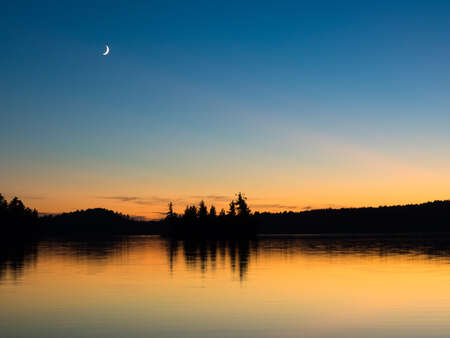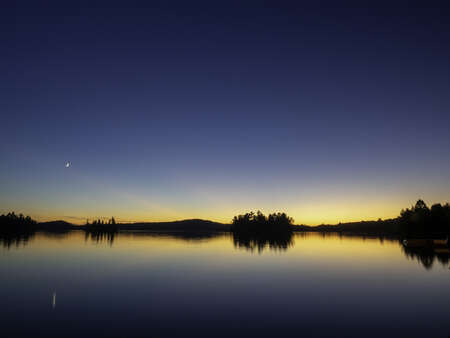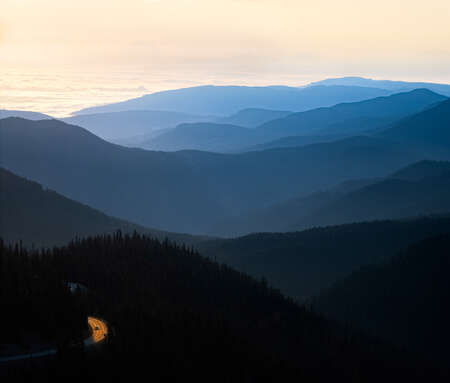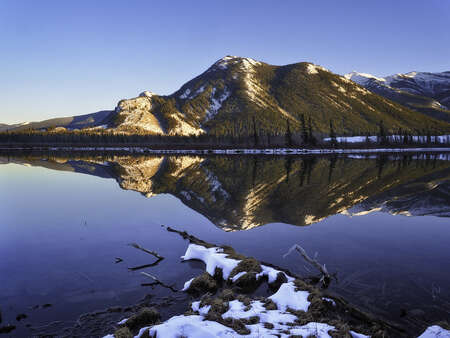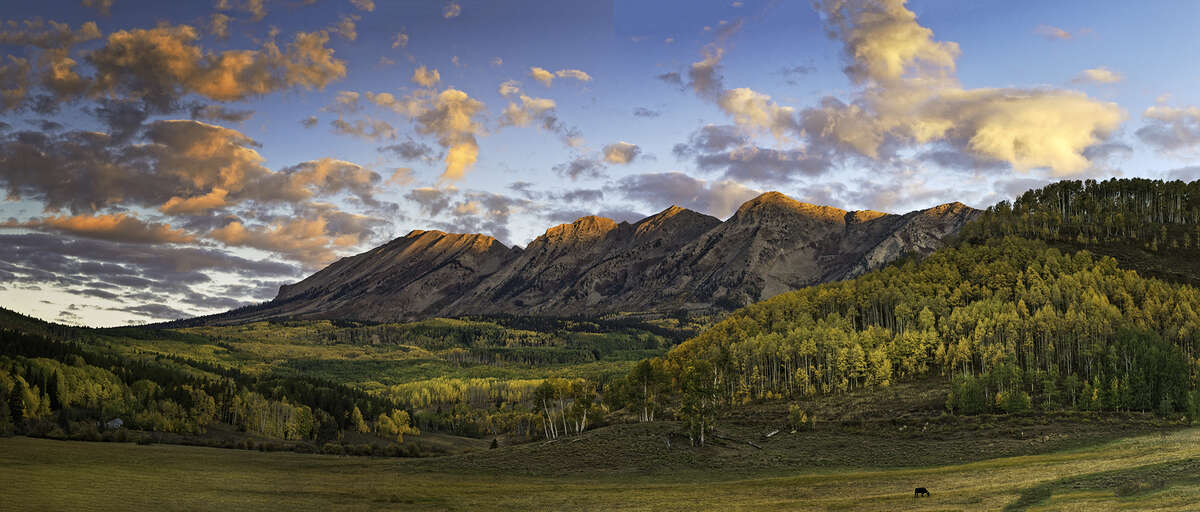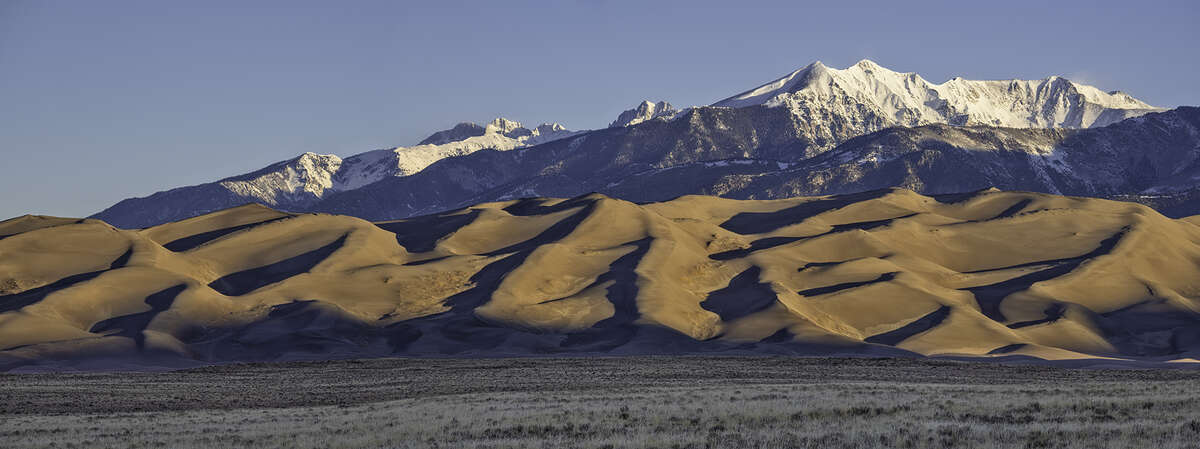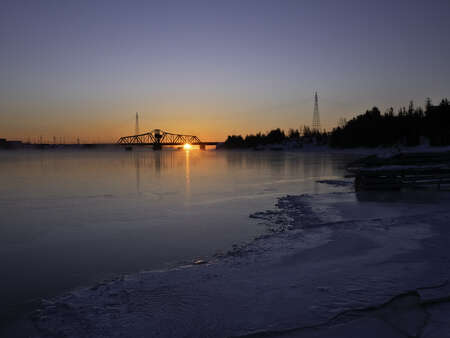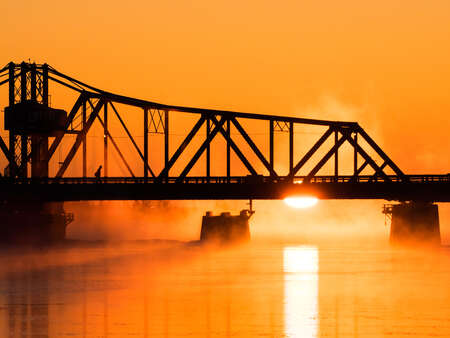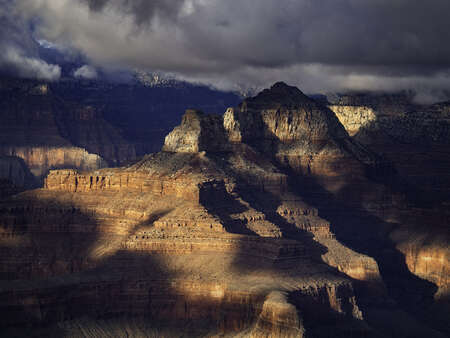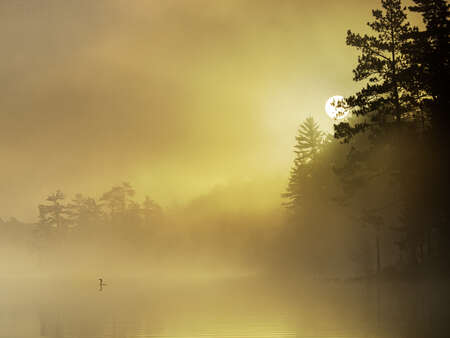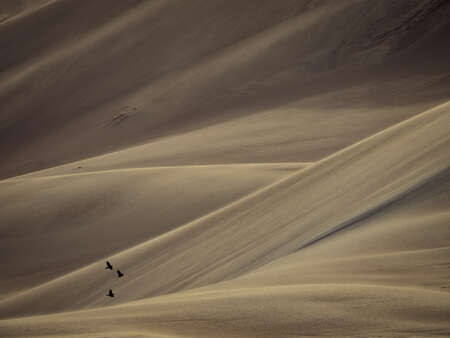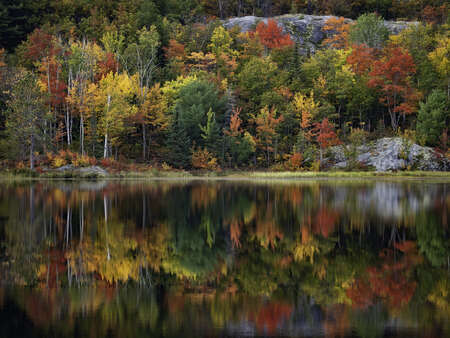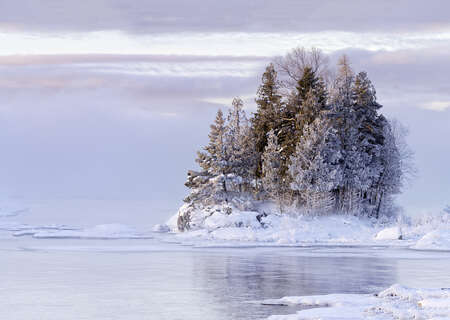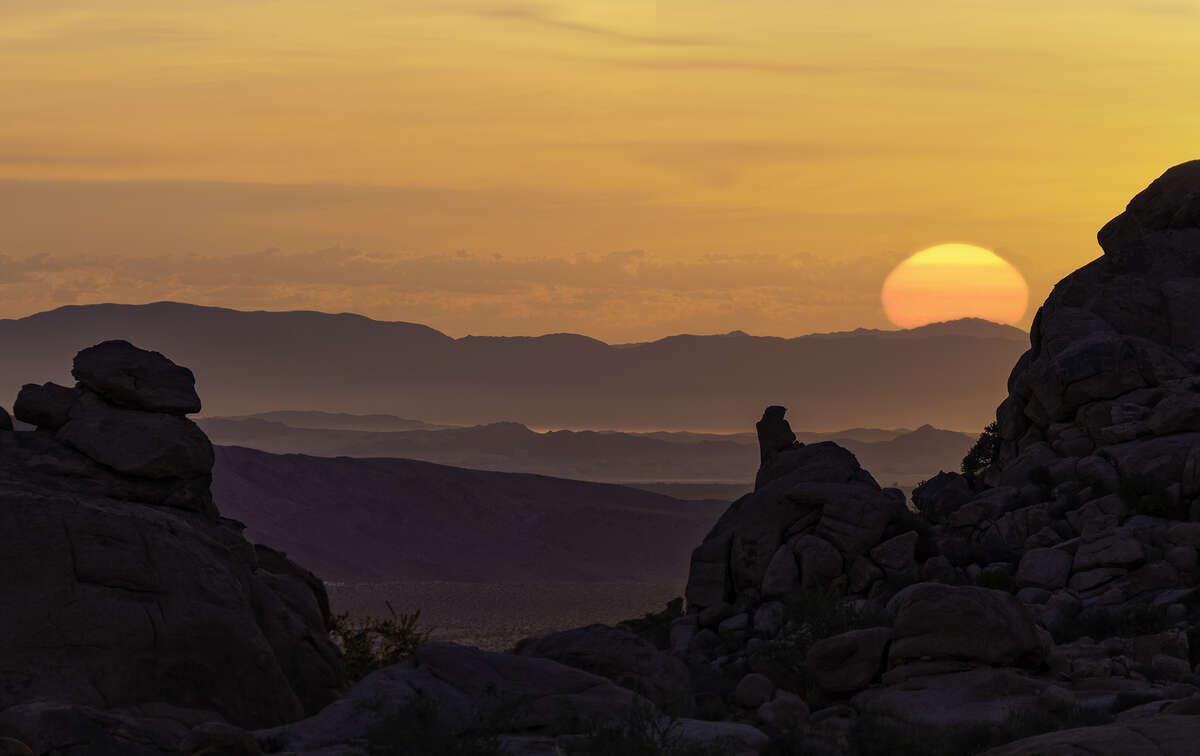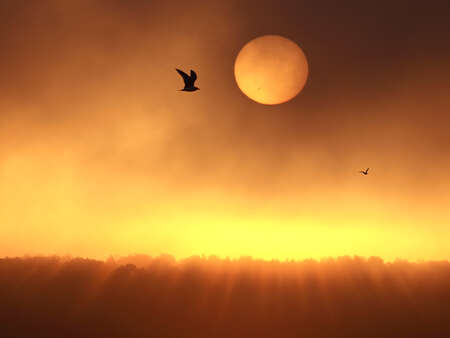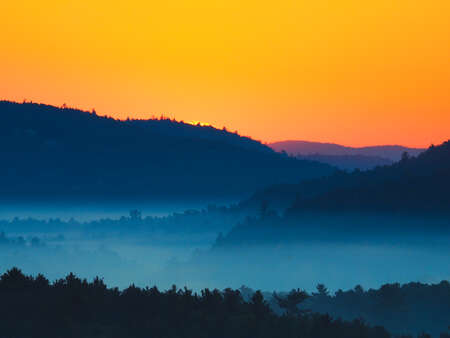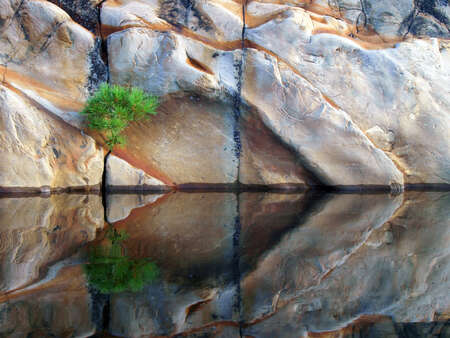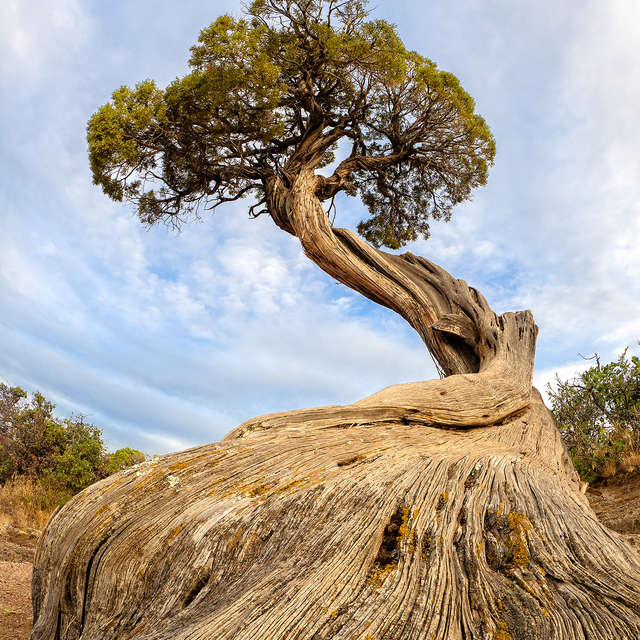A few years ago, my wife and I went on a fall driving tour through part of Northern Ontario. After a great day of shooting we stopped at a beautiful lakeside restaurant, walked in, were seated by the waitress, and each handed a menu. After a cursory glance at the offerings I looked out the restaurant window and saw a photo opportunity that I just couldn't pass up. I put the menu down, told my wife to order something for me, and rushed out of the restaurant. (I'm certain that the waitress thought we'd had a fight.)
I grabbed by camera gear out of the car and quickly headed down to the shoreline. After a few setting changes, and some work with composition, I clicked the shutter release and got this shot...
I liked the shot, so I packed the gear back into the car and headed into the restaurant where a wonderful pickerel dinner and a glass of wine was waiting for me.
The above story is absolutely true, but it leaves out one important detail. That photograph was not the first one I shot. This one was...
As I looked at the image on the LCD, I wasn't at all impressed. The wide-angle lens, my primary landscape tool, just wasn't cutting it for this scene. There was way too much negative space and the crescent moon was just a speck. I realized that to capture the scene the way my mind’s eye was seeing it, I would have to switch to my telephoto lens.
My primary landscape lens is the M.Zuiko 7-14mm F2.8 PRO. It's fantastic for so many situations. But certainly not all. There are times when a telephoto lens is the better choice.
What is a Telephoto Lens?
For most photographers this may sound like a silly question, but it bares mentioning that, when it comes to focal length, anything beyond a 50mm equivalent is considered to be a telephoto lens. For those who shoot with a crop sensor that focal length will be smaller. For example, a micro 4/3s camera has a 2x crop factor making anything beyond 25mm fall within the telephoto range.
Telephoto lenses have several characteristics that impact the final image. Of course, the important one is that they have greater reach and therefore pull your subject in closer and have it fill more of the frame. In the process they provide a smaller field of view and greater compression. The greater the focal length, the more pronounced these characteristics become.
Olympus makes a variety of telephoto lenses. Many of them are great utility lenses that cover the entire gamut from wide angle to mid-range telephoto. My ‘workhorse’ lens is the 12-100mm F4.0 IS PRO. It has the perfect reach for many of the landscape shooting scenarios that I find myself in.
|
Lens |
35mm Equivalent |
|
|
24-200mm |
|
|
24-400mm |
|
|
28-300mm |
|
|
80-300mm |
|
|
80-300mm |
|
|
150-600mm |
|
|
600mm |
|
|
200-800mm |
|
|
300-800mm |
6 Reasons to Shoot Landscapes with a Telephoto Lens
One of the best skills that any photographer can develop is the ability to mentally 'see' the final photograph before they even bring the camera up to their eye. Part of that pre-visualization is knowing how your camera gear 'sees'. Each lens you own will capture the scene in different ways, and although I mainly rely on my wide-angle lenses to capture landscape scenes there are several reasons why a telephoto lens may be the better choice for some situations.
Isolating Your Subject
A telephoto lens is a great tool to help isolate your subject from distractions that might pull focus. As a photographer you have the power to control what your viewer sees, and more importantly, what your viewer doesn't see in the final image. A longer focal length can simplify your composition. Just remember to leave some breathing room around your subject. You still want to ensure that there is space for the eye to explore the surroundings and provide context for the main subject.

OM-D E-M1 Mark II | M.Zuiko Digital ED 40-150mm F2.8 PRO
150mm |1/80s | F6.3 | ISO 640
Compress Space
Telephoto lenses give the illusion that the space between objects has been compressed. This can create an interesting layered effect when photographing distant hills, or make a forest of trees appear denser, or exaggerate the curves in a winding stretch of highway. Part of the appeal of this type of shot is that our own eyes cannot see a scene in this way. Keep in mind that telephoto lenses provide less depth of field for subjects that are fairly close to the lens, but this is less likely to be an issue when pulling in more distant scenes.
Pull in the Details
On a trip through southern Alberta I came across a beautiful lake with a mirrored reflection and some nice evening light. I attempted to create a wide-angle landscape shot, but with a rather dull foreground, and lack of interest in the sky, the final image wasn't doing the scene justice. Instead I switched to a longer focal length and pulled in the far shore. When your foreground lacks interest, switching to a telephoto lens will help emphasize details in the distant surroundings that you may not be able to get to. I will regularly use this approach when the sky lacks interest as well.
Shoot Panoramas
One of the issues with photographing a landscape using a longer telephoto lens is that you may not be able to capture as much of the scene as you would like due to the narrower field of view. To compensate for this, try creating panoramas. When I shoot panos I photograph in vertical orientation, overlap each image in the sequence by 30-40%, and since I rarely use a tripod for my landscape images, I use the built-in level to try to ensure each image lines up well.
Exaggerate the Atmosphere
One scene almost demands the use of a longer lens - misty mornings. A low-lying mist can be difficult to capture with a wide angle lens, but zoom in and you see how the mist plays with the light. It also helps isolate your subject and simplify your composition. I rarely use a telephoto lens to photograph a sunrise, but when the sun is well defined through a thicker haze it seems a natural fit.
Create Natural Abstracts
Photography is built on the elements of design - line, pattern, shape, etc. A good photographer tries to incorporate these into most of their images. Using a telephoto lens can isolate these elements from the 'big picture' and create an interesting natural abstract.
Final Thoughts and Images
Most of us are creatures of habit, and those habits can creep into our photography. It's easy to get stuck in a rut and use the same wide-angle lens, and the same compositional strategies when shooting landscapes. A telephoto lens can open up the possibilities and allow you to see the world in new and interesting ways.
If you are interested in going to the other extreme, check out my article on shooting landscapes with a fisheye lens.
ABOUT PETER
Web: creativeislandphoto.com
Blog: creativeislandphoto.com/blog
Twitter: @creativeisland4
Peter has been a dedicated Olympus shooter for nearly 40 years, and has found a way to combine his passion for photography with his love of teaching to develop photography workshops with a focus on landscape, wildlife and astrophotography. Peter’s work has been published in a number of magazines including Canadian Geographic, Shutterbug and Outdoor Photographer. He maintains his own blog with an emphasis on tutorials that assist others in bringing their photography up to the next level.
